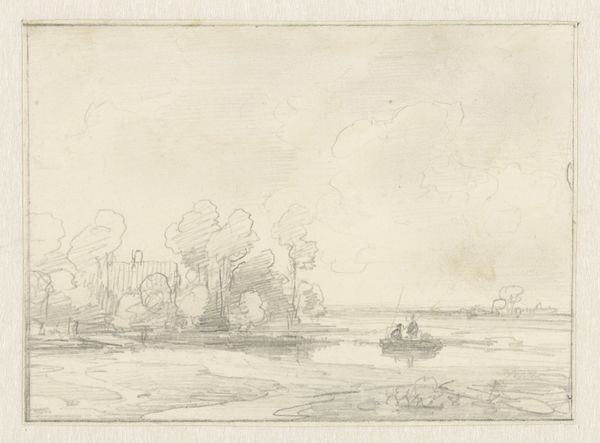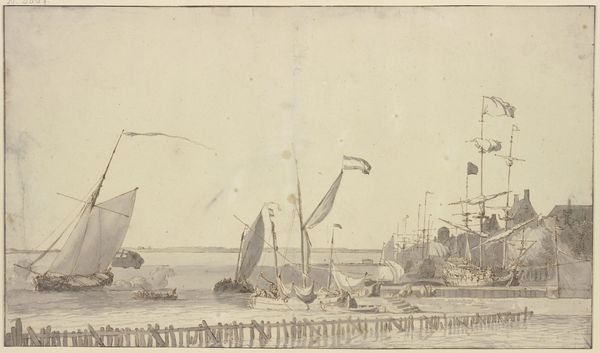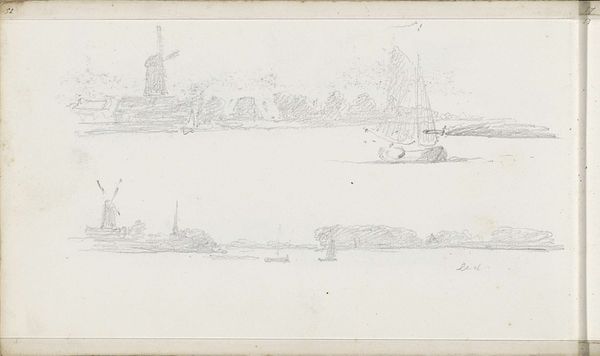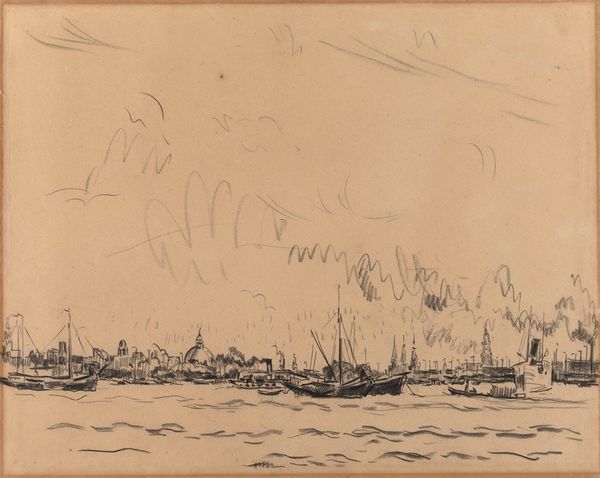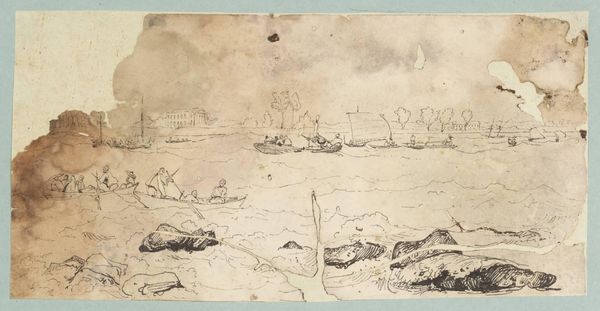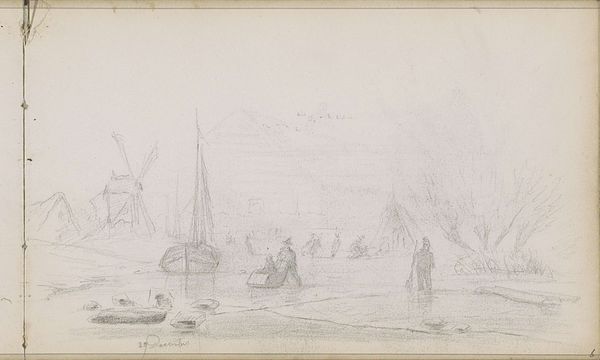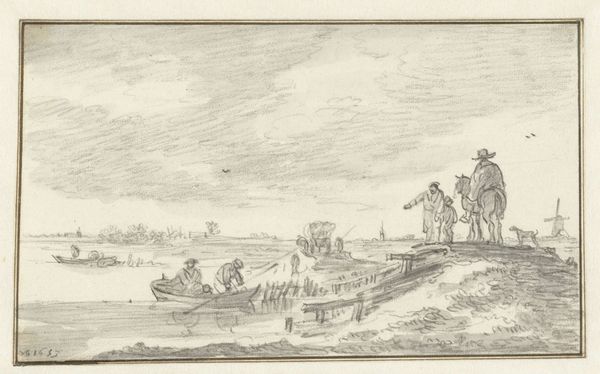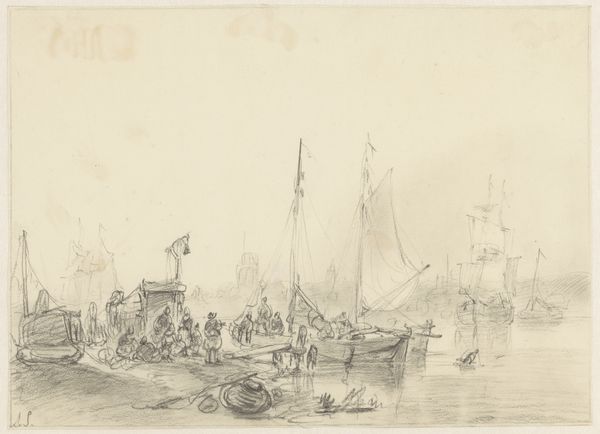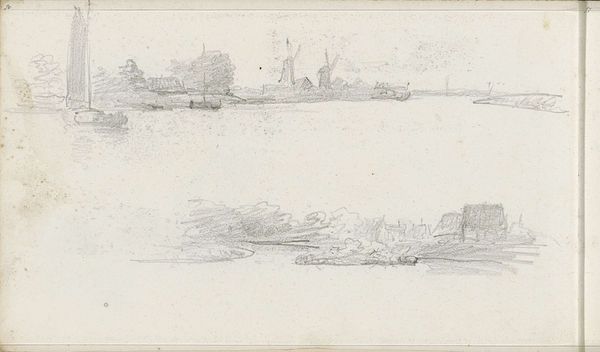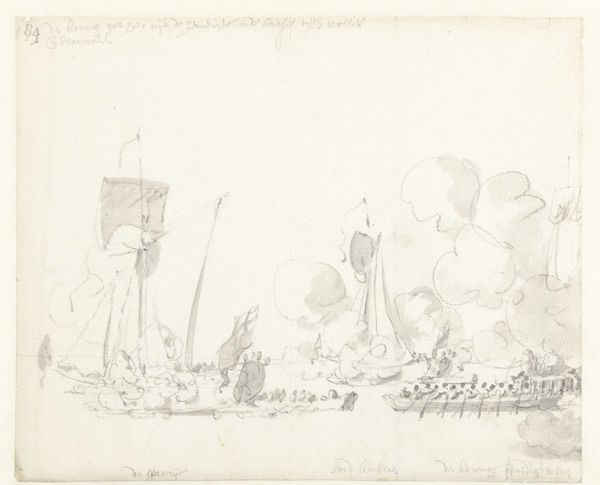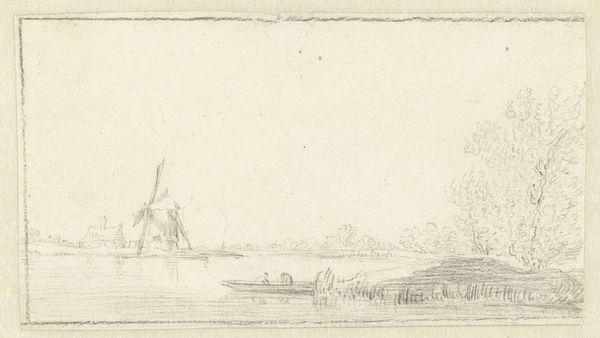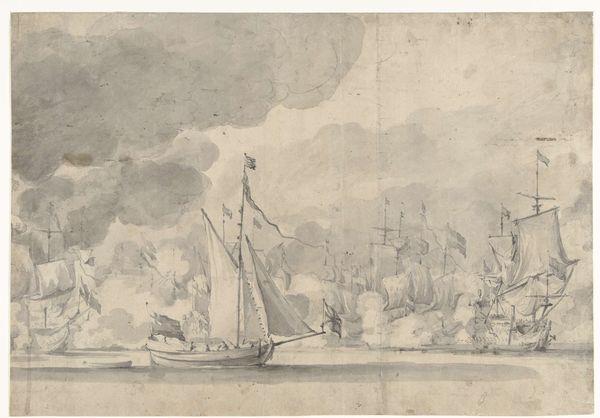
En parlamentar fra den engelske flåde går i land 1801 1799 - 1802
0:00
0:00
drawing, pencil
#
drawing
#
pen sketch
#
hand drawn type
#
landscape
#
hand lettering
#
personal sketchbook
#
hand-drawn typeface
#
ink drawing experimentation
#
pen-ink sketch
#
pencil
#
pen work
#
sketchbook drawing
#
sketchbook art
#
realism
Dimensions: 345 mm (height) x 880 mm (width) (bladmaal)
Curator: Here we have C.A. Lorentzen’s "En parlamentar fra den engelske flåde går i land 1801," which translates to "A parliamentarian from the English navy comes ashore in 1801." This work, residing here at the SMK - Statens Museum for Kunst, was likely created between 1799 and 1802 using pencil and pen with ink. Editor: My immediate thought is how fragile the image appears. It feels like a fleeting moment captured almost breathlessly, given the artist's choice to render the figures and landscape with very fine lines, mainly as quick sketch-like gestures. Curator: It's a fascinating sketch offering insight into the socio-political dynamics of the time. Consider the role of naval power, of Britain landing envoys—implying a negotiation, or perhaps even coercion. What was being transported beyond just personnel? Were commodities also exchanging hands under these delicate conditions? Editor: Absolutely, the very materiality of a drawing like this also suggests something about art production and value at this time. Was this sketch intended for something else? Perhaps studies like these informed larger, more ‘finished’ paintings, that catered to a particular clientele and their need for images reflecting and reinforcing power. This image offers a look behind the curtains! Curator: Indeed. The medium itself — pencil and ink — speaks volumes. The availability of paper, the artist’s access to materials, all tie into production methods, distribution networks, and economic frameworks. Were these materials sourced locally or imported? Was C.A. Lorentzen perhaps involved in producing these very works on commission or for direct distribution? Editor: Viewing it in this context prompts consideration of what public Lorentzen imagined. Was this intended as a piece circulated amongst particular networks, displayed at a specific venue where it carried immediate political or even propagandistic undertones? Or did this end up here because someone understood its value far removed from the politics of the time? Curator: It’s also worth considering the state of artistic institutions at the time and the emergence of the idea of the ‘artist’. Works like these help contextualize and even challenge later notions and boundaries about ‘high’ and ‘low’ art production by focusing attention onto often-overlooked materials like the hand-drawn sketches used to study and render an official image. Editor: Precisely. Thinking about the image today highlights that art's meaning shifts drastically based on historical context, presentation, and the questions it raises regarding public interpretation, not just its creation and intention. Curator: Agreed. And understanding the art world then enables us to see what aspects still shape, however subtly, today's art production. Editor: Ultimately, this understated piece reveals complex layers within a specific time and, indeed, invites to challenge what persists even now in current art world paradigms.
Comments
No comments
Be the first to comment and join the conversation on the ultimate creative platform.
